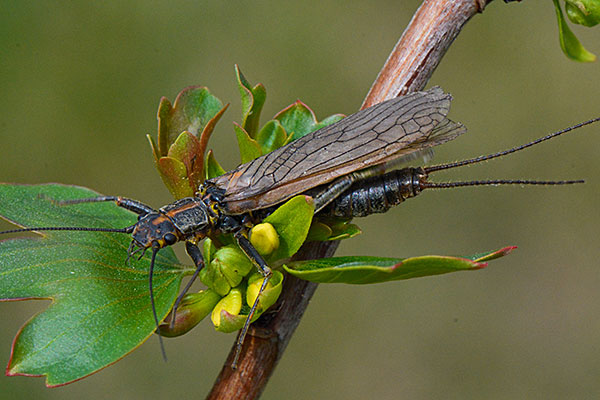
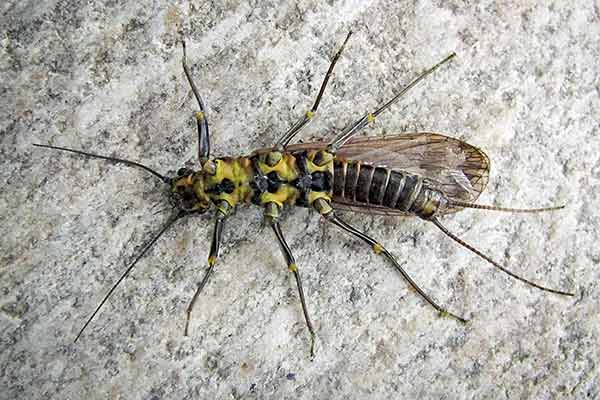

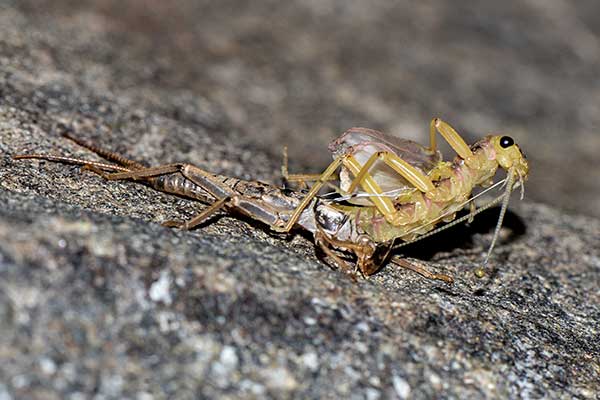




Skwala americana (formerly Skwala parallela)
The Skwala emergence is the first important hatch of the season on the Yakima River. Adults begin to appear the last week or two of February, and fish begin to key on them by the first or second week of March as the numbers of adults increase. The hatch lasts well into April and overlaps March Brown and BWO hatches. Skwala generally emerge at night. Males typically begin to emerge before the females, and mating often occurs as soon as the female frees herself from the nymphal shuck. Male skwala are smaller than the females, have short wings, and are incapable of flight. Skwala adults become important as trout food when the females return to the river to lay eggs, generally in the afternoon and evening. Nymphs prefer fast, rocky runs and riffles and migrate to slower water prior to emergence, which takes place on shore. Size and color in adults can vary quite a bit.
Size: 10,12 2x
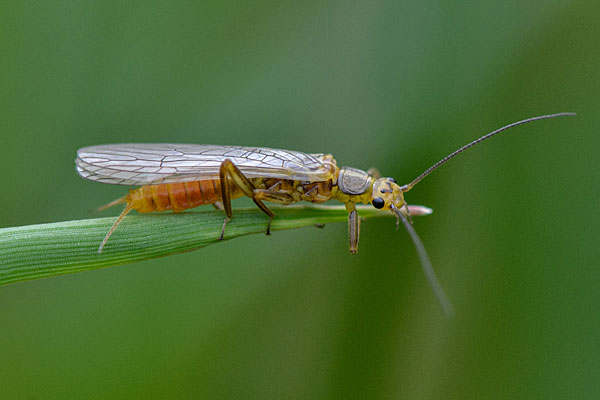
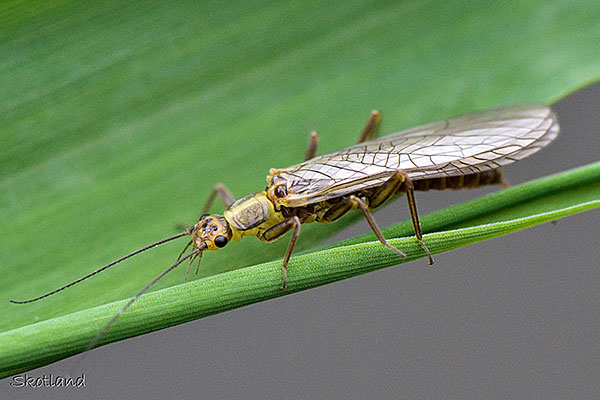
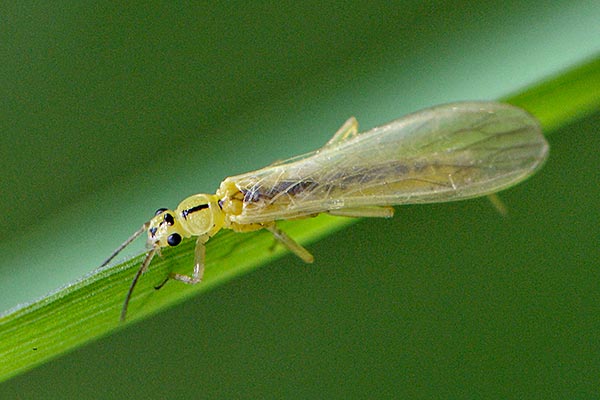
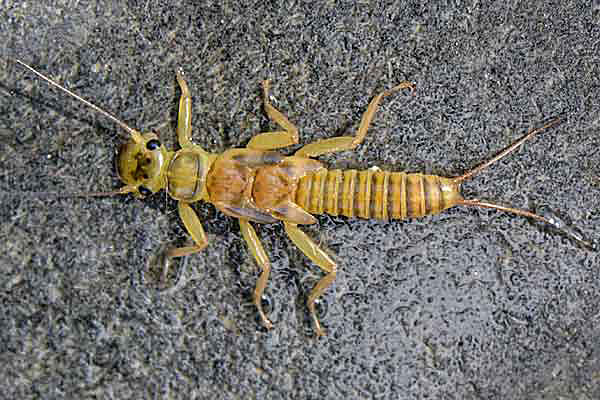
Isoperla / Osobenus
Yellow Sally is a generic term applied to any small yellow stonefly. They are active on the Yakima from May through August. Emergence occurs during daylight hours and egg laying in late afternoon and evening. Nymphs prefer moderate to fast runs and riffles and migrate to slower water to emerge. Emergence takes place on shore. The rear third of the abdomen on egg-laden females will be red.
Size: 14-16.



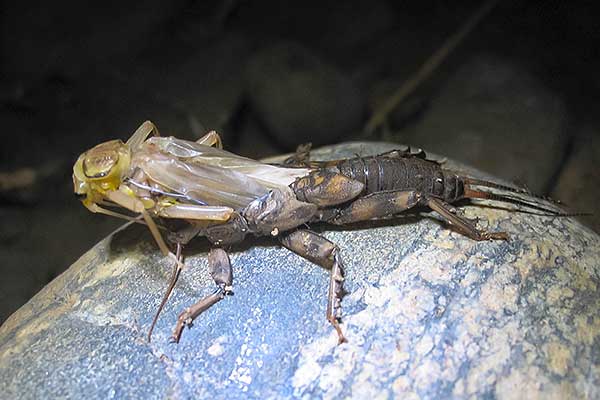
Claassenia sabulosa
The Summer Stone (Shortwing Stone) is the Yakima's premier stonefly hatch. Although these large stoneflies rarely emerge in great numbers, their large size and steady, extended emergence period (from late June to early October) make them an important food source for trout. Males have very short wings and are incapable of flight. Emergence occurs at night and egg laying in late afternoon and evening. Nymphs prefer fast, rocky runs and riffles and migrate to slower water to emerge. Emergence takes place on shore.
Size: 4-6 2x-3x
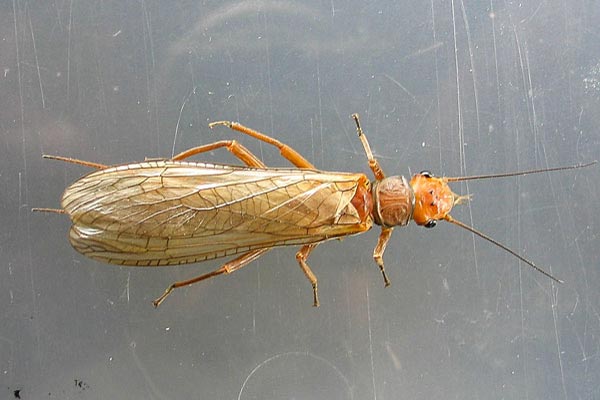
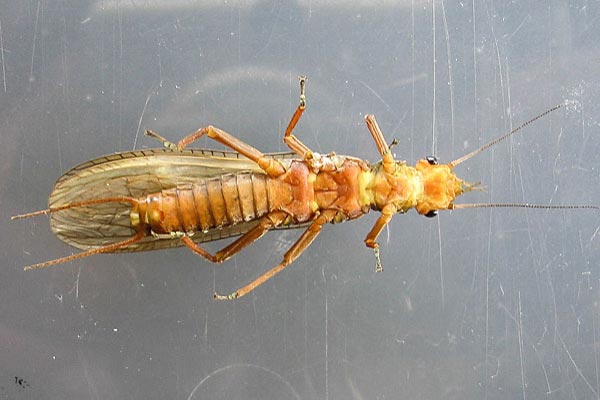
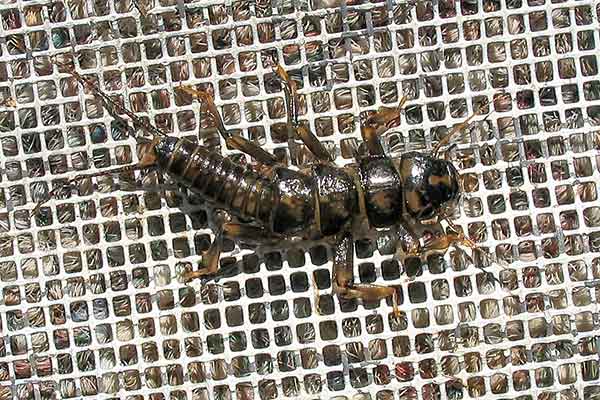
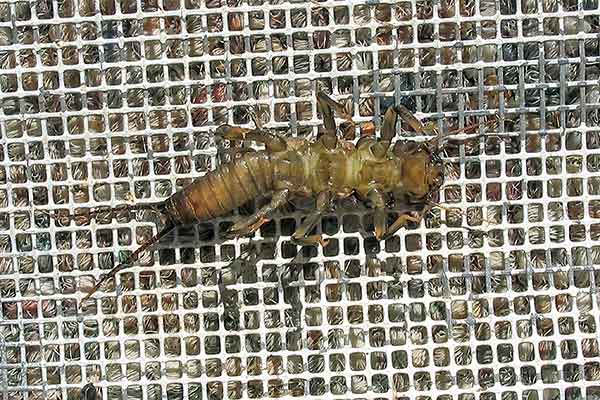
Hesperoperla pacifica (formerly Acroneuria pacifica)
Calineuria californica (formerly Acroneuria californica)
Golden Stones are less important on the Yakima than Skwala americana and Claassenia sabulosa. Can be important locally. The size of the emergence varies greatly from year to year. Pacifica is more common than californica. Emergence usually occurs in the late afternoon and evening. Egg-laying activity is generally in the evening. Nymphs prefer fast, rocky runs and riffles and migrate to slower water to emerge. Emergence takes place on shore.
Size: 6-8 2x-3x / Colors: nymphs: mottled tan and brown. adults: pacifica: yellow orange. californica: golden yellow.
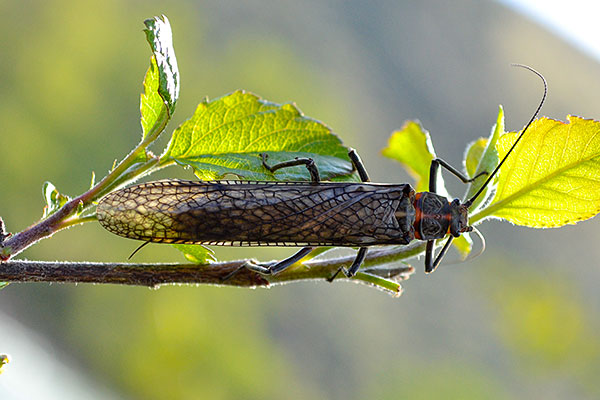
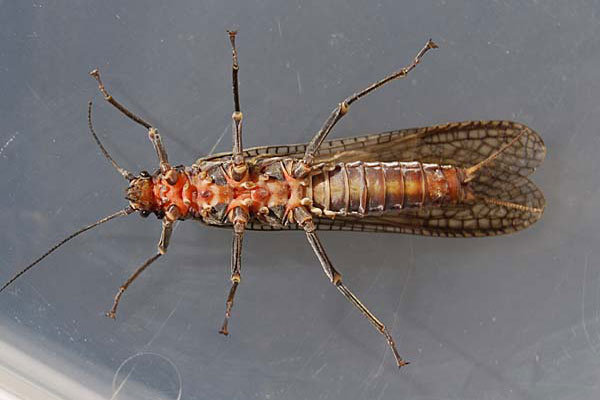
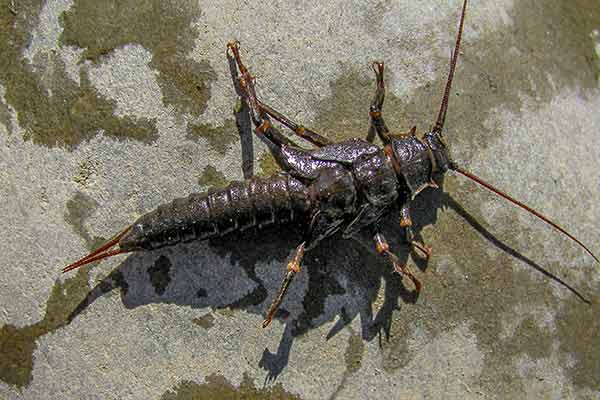
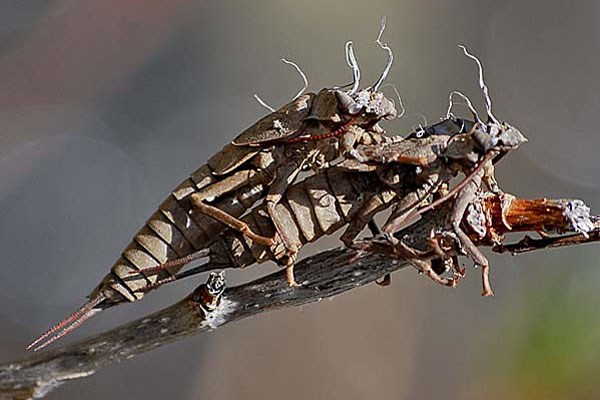
Pteronarcys Californica
Salmonflies are less important on the Yakima than Skwala americana and Claassenia sabulosa. The best emergences of these large stoneflies are generally in the Cle Elum to Thorpe stretch. Nymphs prefer fast, rocky runs and riffles and are most vulnerable to being eaten as they migrate to shore to emerge. The adults live 2 to 3 weeks and are available to trout when they fall or are blown into the water and when the females return to the river to lay eggs.
Size 4-6
Website and Photos by Bruce Skotland. All rights reserved.